Text

1 note
·
View note
Text


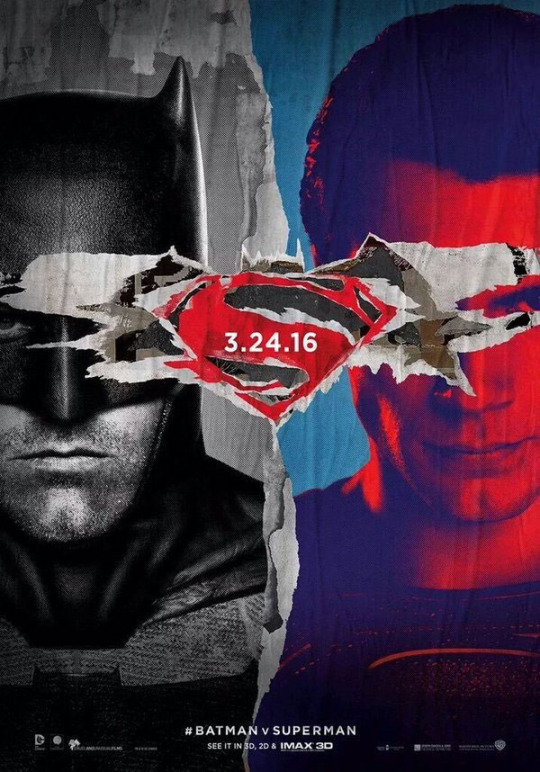
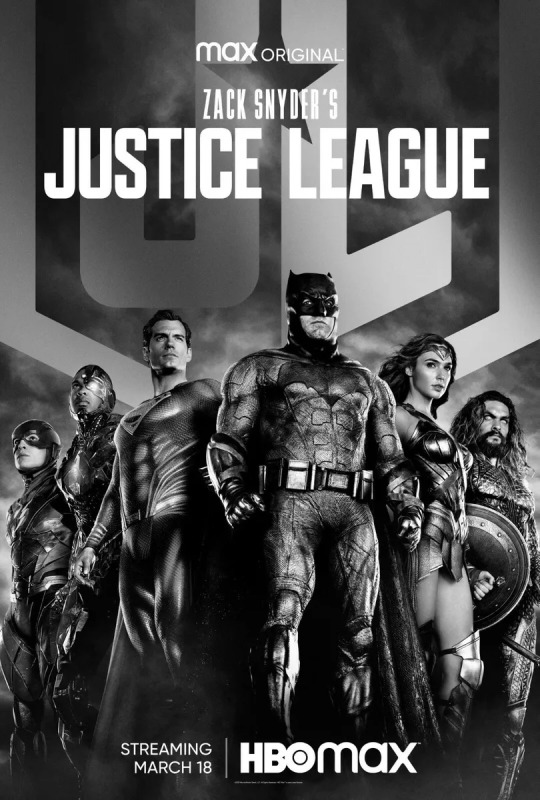
I wasn’t a fan of Snyders DC run until the past year. What an incredible run for superhero films, one of the worst film genres generally.
2 notes
·
View notes
Text
Inversion vs Subversion (George Lucas and Rian Johnson)
Attack of the Clones and The Last Jedi both reuse the Battle of Hoth as the template for their big end battle. I want to highlight the approaches Lucas and Johnson took for this idea and show which one I thought was much better and far more interesting.

The Battle of Hoth is a set piece that takes place on a snow covered planet. It depicts an army in walking machines (along with the sith and stormtroopers) advancing from right to left on rebels trying to flee to space. The rebels are our main characters, including a Jedi. A general rule of screen direction is characters moving from left to right is typically positive and characters moving from right to left is typically negative. In the Battle of Hoth, the empire and the rebels are framed using this rule. The set piece is at the beginning of the movie as Lucas wanted to maintain the feeling of Star Wars as A New Hope ends with a giant set piece.

22 years later, Lucas is making the second film in his prequel trilogy. Lucas employs a technique of inversion. Inverting things from the original trilogy in the prequel trilogy. This creates a visual language of references which can bring new insights into the story and characters. For the ending of Attack of the Clones, Lucas has a battle sequence on Geonosis that features an army advancing from right to left in walking machines (along with stormtroopers) on rebels attempting to flee to space. But this time, the Jedi/main characters are with the walking machines and stormtroopers. While the sith are with the rebels.
Lucas takes the familiar and flips it. He’s mixing the iconography of the originals. Jedi, fighting alongside soldiers in white armor and walking tanks. Lucas is also playing with the rule of screen direction I mentioned, framing the heroes advancing from right to left like the Empire. And this sequence is the end of the film, while Hoth is the beginning but the inversions don’t end there. The Battle of Hoth has two opposing armies fighting for different causes. While the Battle of Geonosis has two armies fighting for the cause, advancing Palpatines agenda. Also, an obvious inversion is Geonosis being a desert planet while Hoth is a snow planet.
Heres a random visual similarity as well. I think this is intentional.


The Battle of Geonosis flips the Battle of Hoth. This invites you to reconsider so many things about both trilogies.

In the second film of the sequel trilogy. Director Rian Johnson often subverts audience expectations. This can be done with visual misdirection or having a character act in unexpected ways. The Last Jedi is well know for “subverting audience expectations”.

The Battle of Crait takes place at the ending of the film. It features an army, advancing left to right, in walking machines along with stormtroopers on rebels trying to flee to space. Johnson has broken the screen direction rule I mentioned earlier, seemingly just for the sake of flipping it. The surface is white and the rebels are hiding inside an abandoned rebel base, just like Hoth. The subversion here is that the white surface is a layer of salt concealing a red surface. This is explained to the audience with a scene of a rebel soldier tasting the surface and declaring, “it’s salt” so everyone knows it’s not snow.
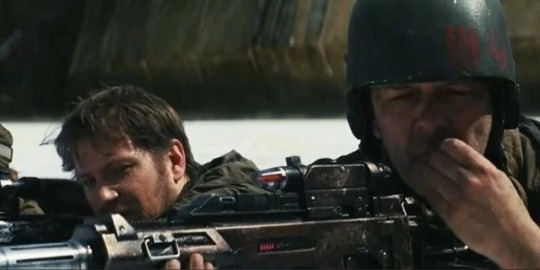
The subversions essentially end there. This is what I consider the biggest difference between the Lucas prequels and Johnson’s episode 8. The depth of thought both directors put into each and every thing in their films. Geonosis is a desert planet but bares almost no visual similarities to Tatooine. It’s a planet with an insect like species, this species has its own culture and architecture that give the planet a unique feel. Geonosis is also more orange than Tatooine.
Crait is barren and empty the way Hoth is but… another barren and empty white planet? Johnson includes a scene just to let everyone know it’s not snow because it just looks like Hoth. The only fun surprise is the streaks of red forming under the vehicle’s and all the damage of blasters. Johnson copied almost every element of Hoth instead of creating something entirely new. While Geonosis only shares a superficial similarity to Tatooine while being vastly different in everyway.
The way Lucas inverts the OG trilogy is far more compelling than the way Johnson subverts audience expectations. Lucas inverts the Battle of Hoth and we get so much from it. Not just in terms of cool new things being added to Star Wars but it’s also interesting on a filmmaking level. Johnson subverts the Battle of Hoth and all we get is a cool visual of red stuff.
2 notes
·
View notes
Text
Inversion vs Subversion (George Lucas and Rian Johnson)
Attack of the Clones and The Last Jedi both reuse the Battle of Hoth as the template for their big end battle. I want to highlight the approaches Lucas and Johnson took for this idea and show which one I thought was much better and far more interesting.

The Battle of Hoth is a set piece that takes place on a snow covered planet. It depicts an army in walking machines (along with the sith and stormtroopers) advancing from right to left on rebels trying to flee to space. The rebels are our main characters, including a Jedi. A general rule of screen direction is characters moving from left to right is typically positive and characters moving from right to left is typically negative. In the Battle of Hoth, the empire and the rebels are framed using this rule. The set piece is at the beginning of the movie as Lucas wanted to maintain the feeling of Star Wars as A New Hope ends with a giant set piece.

22 years later, Lucas is making the second film in his prequel trilogy. Lucas employs a technique of inversion. Inverting things from the original trilogy in the prequel trilogy. This creates a visual language of references which can bring new insights into the story and characters. For the ending of Attack of the Clones, Lucas has a battle sequence on Geonosis that features an army advancing from right to left in walking machines (along with stormtroopers) on rebels attempting to flee to space. But this time, the Jedi/main characters are with the walking machines and stormtroopers. While the sith are with the rebels.
Lucas takes the familiar and flips it. He’s mixing the iconography of the originals. Jedi, fighting alongside soldiers in white armor and walking tanks. Lucas is also playing with the rule of screen direction I mentioned, framing the heroes advancing from right to left like the Empire. And this sequence is the end of the film, while Hoth is the beginning but the inversions don’t end there. The Battle of Hoth has two opposing armies fighting for different causes. While the Battle of Geonosis has two armies fighting for the cause, advancing Palpatines agenda. Also, an obvious inversion is Geonosis being a desert planet while Hoth is a snow planet.
Heres a random visual similarity as well. I think this is intentional.


The Battle of Geonosis flips the Battle of Hoth. This invites you to reconsider so many things about both trilogies.

In the second film of the sequel trilogy. Director Rian Johnson often subverts audience expectations. This can be done with visual misdirection or having a character act in unexpected ways. The Last Jedi is well know for “subverting audience expectations”.

The Battle of Crait takes place at the ending of the film. It features an army, advancing left to right, in walking machines along with stormtroopers on rebels trying to flee to space. Johnson has broken the screen direction rule I mentioned earlier, seemingly just for the sake of flipping it. The surface is white and the rebels are hiding inside an abandoned rebel base, just like Hoth. The subversion here is that the white surface is a layer of salt concealing a red surface. This is explained to the audience with a scene of a rebel soldier tasting the surface and declaring, “it’s salt” so everyone knows it’s not snow.

The subversions essentially end there. This is what I consider the biggest difference between the Lucas prequels and Johnson’s episode 8. The depth of thought both directors put into each and every thing in their films. Geonosis is a desert planet but bares almost no visual similarities to Tatooine. It’s a planet with an insect like species, this species has its own culture and architecture that give the planet a unique feel. Geonosis is also more orange than Tatooine.
Crait is barren and empty the way Hoth is but… another barren and empty white planet? Johnson includes a scene just to let everyone know it’s not snow because it just looks like Hoth. The only fun surprise is the streaks of red forming under the vehicle’s and all the damage of blasters. Johnson copied almost every element of Hoth instead of creating something entirely new. While Geonosis only shares a superficial similarity to Tatooine while being vastly different in everyway.
The way Lucas inverts the OG trilogy is far more compelling than the way Johnson subverts audience expectations. Lucas inverts the Battle of Hoth and we get so much from it. Not just in terms of cool new things being added to Star Wars but it’s also interesting on a filmmaking level. Johnson subverts the Battle of Hoth and all we get is a cool visual of red stuff.
2 notes
·
View notes
Text




My top 4 favorite films of 2023 (so far). What are your favorites?
#cinema#film#letterboxd#martin scorsese#sofia coppola#Priscilla#killers of the flower moon#oppenheimer#barbenheimer#bottoms
0 notes
Text

Killers of the Flower Moon
Martin Scorsese has made yet another masterpiece. It’s a devastating depiction of white supremacy and the evil that man is capable of. It’s a harrowing experience, I walked out of the theater completely overwhelmed. Its a beautifully crafted film, every frame offers something worth studying. All the performances are stunning, especially the main 3: Leo, De Niro and Gladstone. This is De Niro at his most sinister, his character is so disgusting it’s hard to look at the screen sometimes. One of Americas untold tragedies is elegantly depicted in a true historical epic directed by the greatest director of all time. Please go see it in theaters!!
9 notes
·
View notes
Text


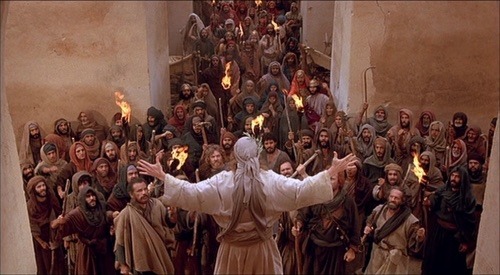

Martin Scorsese.
Go see Killers of the Flower Moon this week!
#cinema#film#letterboxd#the last temptation of christ#the aviator#the age of innocence#the Irishman#martin scorsese#killers of the flower moon
2 notes
·
View notes
Text

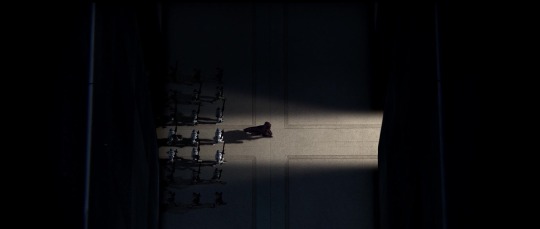



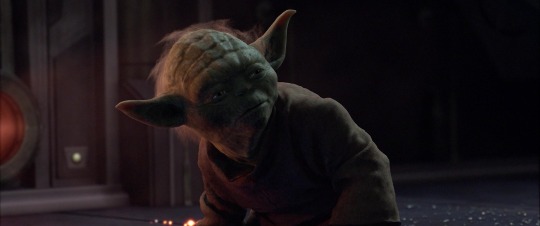


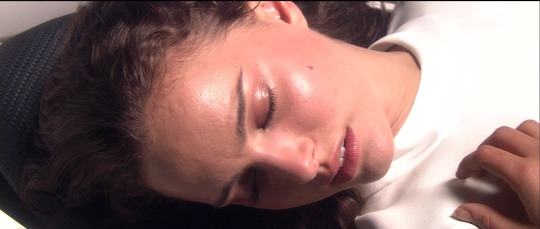

Apocalypse.
Revenge of the Sith directed by George Lucas.
#cinema#film#letterboxd#george lucas#star wars prequels#star wars#anakin skywalker#padme amidala#padme#revenge of the sith#yoda#anakin and padme
20 notes
·
View notes
Text







When love is framed like this…
#cinema#film#letterboxd#Star Wars#star wars prequels#anakin skywalker#padme amidala#attack of the clones#romance
38 notes
·
View notes
Text
Crimewave (1985)
Sam Raimi and Bruce Campbell team up with the Coen Brothers for Raimis follow up to The Evil Dead. The film was such a disaster it ended the studio who funded Crimewave, it also emotionally scarred everyone involved in the production. It’s a very funny and bizarre film, if you like Raimi and Campbell I highly recommend.
7 notes
·
View notes
Text

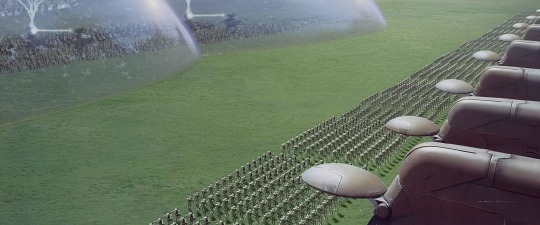




Mentally, I’m here.
The Phantom Menace (1999).
1 note
·
View note
Text

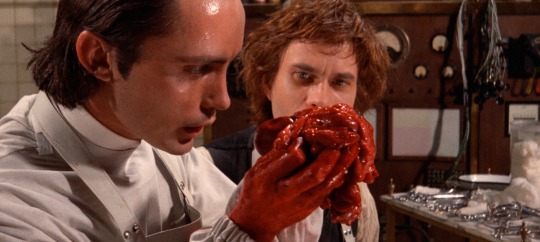
Flesh for Frankenstein (1973)
A ludicrous adaptation of Frankenstein that barely follows the source material. It’s the exploitation version of Frankenstein with more tits, sex, gore and funny moments than you could hope for.
2 notes
·
View notes
Text
I literally cannot think about this scene without crying.
James Whale, the director of Frankenstein and the Bride of Frankenstein was openly gay, in the 30s. His experience as a marginalized person radiates in this scene as he explores the connection of two marginalized people. The Monster and blind man have an immediate understanding of each other. The Bride of Frankenstein is one of the most queer films to not feature any queer characters.
28 notes
·
View notes
Text



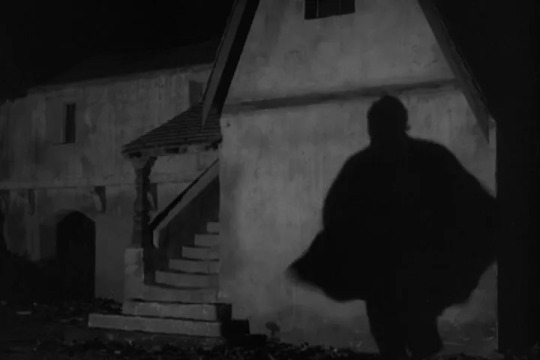
There’s nothing like 30s horror.
#cinema#film#letterboxd#universal monsters#bela lugosi#horror#Frankenstein#Dracula#bride of frankenstein
47 notes
·
View notes
Text


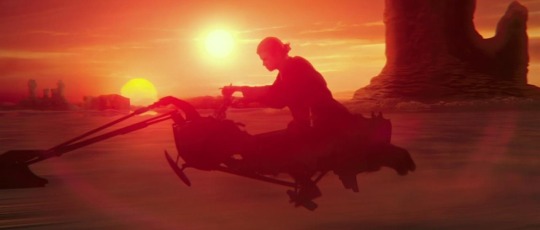
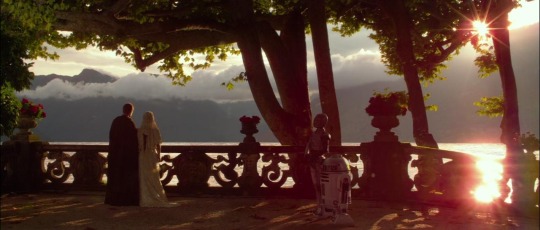


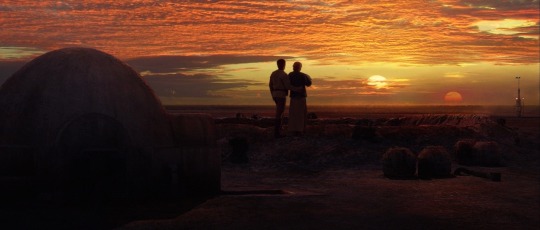
George Lucas and the Sun
87 notes
·
View notes
Text

Land of the Dead (2005)
The Romero zombie series is easily the best zombie franchise out there. It’s mix of gore, humor and political allegory put it above the rest which is often a pale imitation of Romeros best work. What really makes this series unique is the humanization of the undead. Dawn of the Dead, Day of the Dead, Land of the Dead and Survival of the Dead all play with memory retention of the zombies. Their minds can regenerate in a way, becoming more human over time. Remembering places they liked going and things they liked doing. This is in contrast with the human characters, who are the real threat to humanities survival.
Each dead film has this concept in its DNA but the greatest example of the humanization of the undead contrasted with the growing threat of the living is Land of the Dead. The setting is Fiddlers Green, a luxury apartment building home to the rich. This apartment building is surrounded by slums, where the poor are. It’s every persons dream to make enough money to buy their way into Fiddlers Green (even in the apocalypse there’s still money). It’s a feudal society, upwards mobility is impossible as no amount of money will convince the rich to let poor people in.
Beyond the walls of Fiddlers Green there’s a community of the undead, they project a shadow of humanity as they imitate their old life. Couples holding hands, undead doing jobs, zombies playing music. It’s a startling advancement in their cognition but this is destroyed by a band of humans collecting resources for Fiddlers Green. This starts a literal uprising of the undead as the most intelligent zombie, Big Daddy leads a horde to Fiddlers Green. The dead make their way into the luxury apartment building in and literally eat the rich. It’s a class uprising and the audience cheers it on, regardless of if they understand the subtext.
It’s a class uprisings, the undead leave after the upper class area has been destroyed and leave the poor and survivors alone. To Romero, reanimated corpses have more humanity than the richest of the rich. They undead are like heroes in the climax of Land of the Dead, defeating the elites and freeing the oppressed in Fiddlers Green. The undead aren’t pure though, they are more like anti heroes. Doing what’s right in the most fucked up way possible.
(I’m not a great writer but idk anybody who likes to talk about movies this way. Throwing these thoughts out into the void is all I got)
14 notes
·
View notes